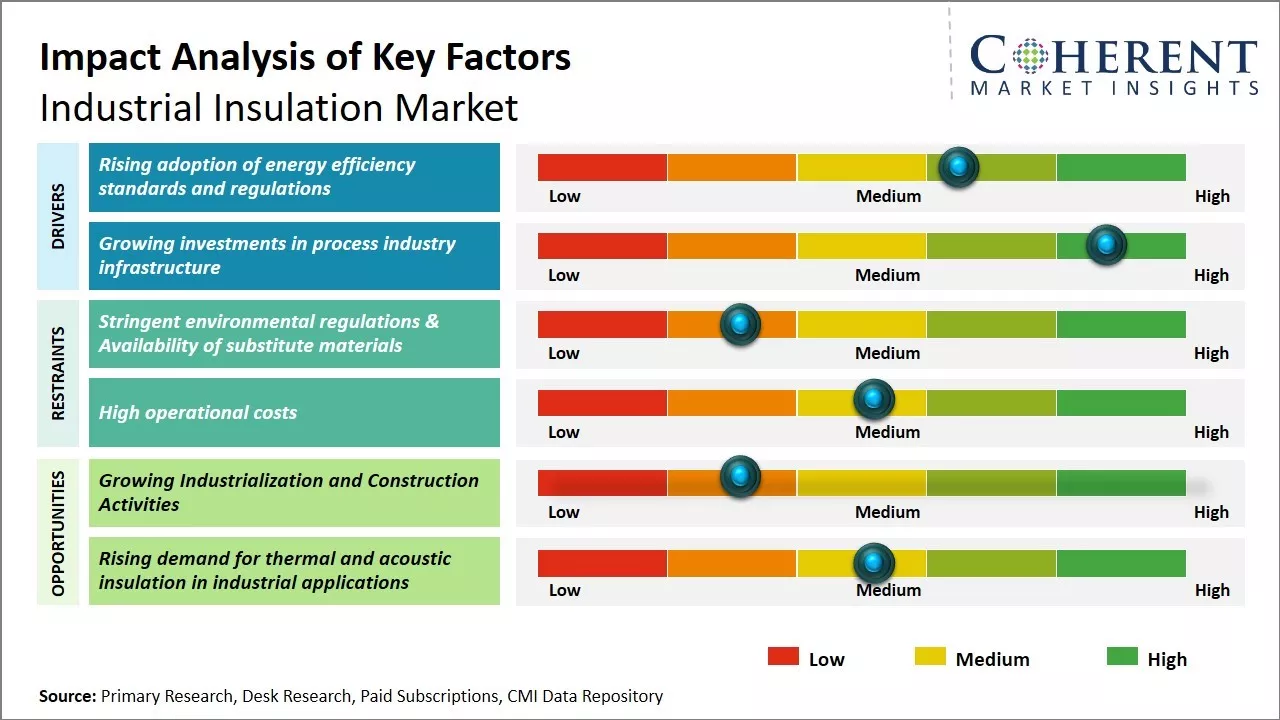The global industrial insulation market is estimated to be valued at USD 4.51 Bn in 2025 and is expected to reach USD 6.39 Bn by 2032, growing at a compound annual growth rate (CAGR) of 5.1% from 2025 to 2032.

To learn more about this report, Request sample copy
The industrial insulation market is expected to witness significant growth over the forecast period. Rising energy costs across major industries, such as petrochemicals, oil & gas, power generation, and cement, is encouraging end users to focus on energy efficiency through the optimum utilization of insulation systems. Furthermore, stringent government regulations regarding energy efficiency and greenhouse gas emissions from industrial facilities is further promoting the utilization of insulation systems. Manufacturers are hence increasingly developing innovative, sustainable, and cost-effective insulation solutions to cater to the growing demand. Significant investments by major economies in the expansion of their oil & gas and petrochemical industries will also drive the consumption of insulation materials in the coming years.
Rising adoption of energy efficiency standards and regulations
With growing environmental concerns and increasing focus on reducing carbon emissions, many countries and organizations have implemented stringent regulations mandating higher levels of energy efficiency in industrial facilities and operations. Industrial insulation plays a crucial role in improving energy efficiency by reducing heat transfer and thermal bridging. It helps lower energy costs significantly by minimizing energy losses. Various governments around the world have passed legislations that industrial and commercial facilities must meet certain insulation standards to minimize heat gain and loss. For instance, according to the data published on December 7, 2023, the EU Energy Performance of Buildings Directive (EPBD) sets minimum energy performance requirements for new and existing buildings including industrial and commercial facilities. According to the same source, Each Member State would adopt its own national trajectory to reduce the average primary energy use of residential buildings by 1 6.39 % by 2030 and 20-22% by 2035. This is driving greater demand for advanced insulation materials that can help organizations comply with the new energy efficiency protocols. Major industries like oil & gas, petrochemical, power, and manufacturing have to abide by these regulations and optimize insulation levels, thereby promoting the increased adoption of high-performance insulation systems. The enforcement of stricter policies to curb greenhouse gas emissions and fossil fuel usage is expected to continue supporting the industrial insulation market growth.
Joining thousands of companies around the world committed to making the Excellent Business Solutions.
View All Our Clients